2021-10-01
Here is a look at the top 10 of the overall ranking for our statistics fans:
|
Rank |
Name |
Towers |
Country |
Fraction |
Members |
Credits |
|
|
1 |
FlagstackFanatics |
1849 |
|
|
5 |
757,931 |
|
|
2 |
FlagWatchers |
1571 |
|
|
5 |
681,322 |
|
|
3 |
SPHINX und GUARDIANS |
1725 |
|
|
5 |
539,801 |
|
|
4 |
Knight Riders |
783 |
|
|
5 |
369,812 |
|
|
5 |
1st.-FlagHunting-WildCats |
876 |
|
|
5 |
357,415 |
|
|
6 |
FlagTerriers |
734 |
|
|
5 |
320,094 |
|
|
7 |
Team Deploy Mania |
670 |
|
|
5 |
296,332 |
|
|
8 |
Sic Mundus Creatus Est |
631 |
|
|
5 |
283,892 |
|
|
9 |
Rapunzel 2.0 |
632 |
|
|
5 |
232,614 |
|
|
10 |
RedFlagStars |
515 |
|
|
5 |
229,998 |
And here's the fraction ranking of Team Battle #70, and we're delighted with the great overall performance from all players:
|
Rank |
Name |
Towers |
Teams |
Credits |
Average |
|
|
1 |
|
The Syndicate of Flag Hunter |
8767 |
23 |
3,570,149 |
155,224 |
|
2 |
|
The Alliance of Flag Keeper |
5378 |
23 |
2,221,951 |
96,607 |
|
3 |
|
The Cartel of Flag Seeker |
3499 |
22 |
1,696,005 |
77,091 |
All details about the team and fraction rankings can be found with a quick click.
You can find all detailed information about the credit distribution on the official FLAGSTACK help page for Team Battles.
You are enthusiastic about Team Battles, all the excitement and variety and especially about your personal advantages through the great prizes? Than you know what you have to do: Tell all your friends about it and create a new team - or even two - because after a short recovery time the next Team Battle is already in sight - on 05. October 2021 at 0:00 (Timezone Europe / Berlin) the TB #71 starts!
Your Team FLAGSTACK
2021-09-29
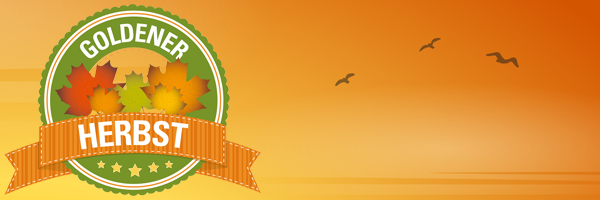
FLAGSTACK's Indian Summer invites you to collect winter forage
Golden autumn, Indian summer... Call it what you like - this wonderful time with picturesque autumn leaves finally begins!
Do you look forward to the yellow-reddish leaves that conjure up incredibly beautiful light moods, especially at sunrise or sunset? Can you hear the rustling of the fallen leaves on your autumn walk? And can you already smell that unique, fresh scent in the forest? The golden season of autumn is sensational for all your senses!
Starting right now, you'll take your daily walk in the woods with FLAGSTACK, because some types of flags will turn into autumn trees for you! Typical for the colorful autumn season: the trees lose their discolored leaves and ripe fruits. Can you imagine how fallow deer, wild boars and squirrels are excited about tasty acorns, chestnuts and walnuts?!
And that's where you come in! Take your daily walk through the FLAGSTACK autumn, collect nuts for the forest animals as winter forage and a few new badges for yourself :-)
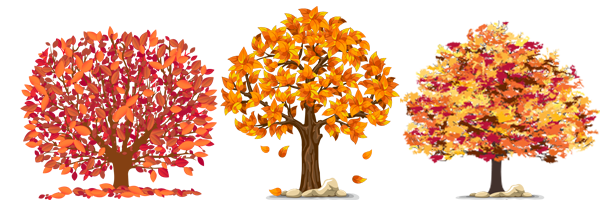
So, you want 3 badges? Well, complete the following 3 challenges!
As we described, the forest animals have a huge appetite for nuts.
Challenge 1: Collect acorns from 29.09. as the first type of nuts, and the wild boars won't have to dig up the whole forest floor. You will find all types of nuts when you reload the map at a captured tree, this will make the leaves and the nuts visible... When you have found 100 acorns, you will be rewarded with the "Indian Summer - Acorns" badge and you can search for the next type of nuts.
After you have completed the acorn badge min. for one time, you can start to collect the next type of nuts.
Challenge 2: Collect chestnuts now, and the fallow deer will be very grateful. When you have found 50 chestnuts, you will be rewarded with the "Indian Summer - Chestnuts" badge and you can start looking for the third type of nuts.
After you have completed the acorn and chestnut badges min. for one time, you can start looking for the last type of nuts.
Challenge 3: Collect walnuts as the third type, and the squirrels will be happy about these treats. When you have found 25 walnuts, you will be rewarded with the "Indian Summer - Walnut" badge and a lot of forest animals will be thankful.
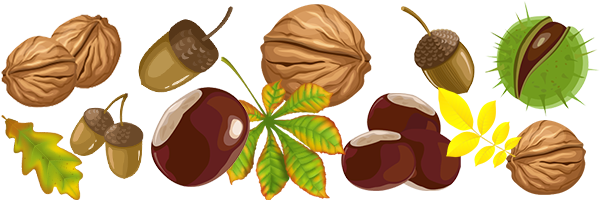
What would FLAGSTACK be without an extra reward for the very diligent people? If you have completed all three challenges min. for one time, then you will be rewarded with the badge "Indian Summer - Winter Forage Mix" on top!
You want to contribute your part to the fun of this "Indian Summer" campaign? Click here to enter the Fanshop and purchase Winter Food as "Indian Summer" Campaign Jumper Flags at a special price! Besides the "Golden Winter Forage" badge, you'll receive a Friend Flag+ as a little surprise, as we thank you for your great support to the community :-)
Don't be irritated by leaves lying around when you're collecting nuts, they'll give you a few extra points. Even if the leaves don't count for any badges, they look pretty...
You also find golden nuts on your way? These golden nuts give you extra points when you collect them and also count for the challenges, so they are doubly attractive for you.
You don't need to be afraid of wild animals that run across your way from time to time. Maybe some are tame and can be caught? Just try it out...
The Indian Summer at FLAGSTACK takes place from 29.09.21 up to and including 07.11.21 (time zone FHQ/Europe/Berlin).
Enjoy your daily walk in the woods and thank you for your efforts to collect winter forage....
Stay healthy.
Your team FLAGSTACK
PS: Long Story short...
Collect leaves, animals and nuts at Eternal Flags, Treasure Flags and Oracle Flags, that become visible after capturing and reloading the map.
When you have collected 100 acorns you will receive the first badge, only from this moment collecting chestnuts will count for the next badge.
After you have collected 50 chestnuts you will receive the second badge, and only from this moment collecting walnuts will count for the next badge.
After you have collected 25 walnuts you will receive the third badge.
When you have completed all three challenges min. for one time, you will receive the 4th bonus badge.
If you purchase the "Indian Summer" jumper package in the FLAGSTACK Fanshop you will receive the 5th badge.
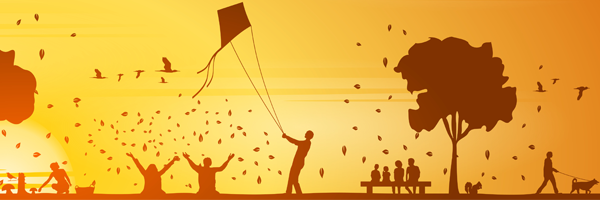
2021-09-14
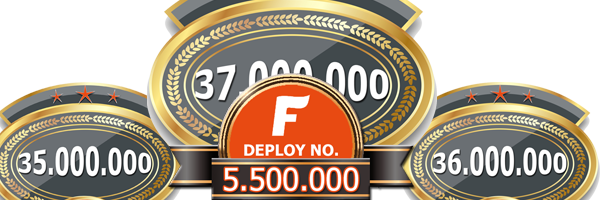
Hello FLAGHUNTER,
Finally some rest has returned to the daily routine... The search for the blueprints and the development of the Kestrel were a lot of fun for all of us, but we were also very busy...
So there's nothing huge new here, but we'll tell you about some very special, record-breaking moments :-)
On 12.06. Zwiebel57 from and in Germany captured the 35 millionth flag :-) and immediately won 60 minutes of double deploy points.
If you want to get the badge, you can find this special flag here
On 28.07. karrajan from and in Germany captured the 36 millionth flag :-) and won a 30% voucher code for the webshop.
If you want to get the badge, you can find this special flag here
On 07.09. MCFonz from and in Australia deployed the 5.5 millionth flag :-) and got 60 minutes of double deploy points as a direct reward.
If you want to get the badge, you can find this special flag here
Last but not least for today birdy1966 from and in Germany captured the 37 millionth flag on 09.09. :-) and won 60 minutes of double Deploy points.
If you want to get the badge, you can find this special flag here
All four records have one thing in common: they all happened at Green Flags. So what came to mind when we first noticed that? Let's celebrate the Green Flag in a big way!
What do you think about giving DOUBLE POINTS on EVERYTHING at Green Flag on the weekend of 15-17 October 2021*? Double Capture Points, double Deploy Points and also double Capture On Points?!
Go ahead, grab a route planner to the four new badges, pick the best located one and capture many, many Green Flags on the way there... Or take a route where there aren't many flags at all and change this by generously deploying your Green Flags that would otherwise be slumbering in your inventory!
No matter what you decide to do about it...
Take care, stay healthy and have fun on the flag and badge hunt.
Your Team FLAGSTACK
PS: Surely you thought so...
* = 0:00 - 23:59 each, time zone FHQ / Europe / Berlin
2021-09-04

Dear FLAGHUNTER,
Great news needs a proper format when it is published. The break-in at the FHQ in July has really caused a stir. The volunteers have even gone as far as Africa in search of Sir Mango and the raccoons, in other words, the missing blueprints. I'm sure you've been following this eagerly in our recent chat messages. We can always rely on the super teamwork of the volunteers, so that the gang of thieves with the valuable puzzle pieces was caught and the team of developers could work on the completion of the secret project during the last days.
And today we proudly and spectacularly present the result!
Do you remember the volunteers being virtually in New York at Tesla Corner in February? It wasn't entirely by chance, after all that led to the inspiration and development of the Kraftfeld / Force Field.
And yes, the genius Nikola Tesla made lasting impressions. It is hard to imagine all the things he was working on. And a very small part of it finds its way into the game at FLAGSTACK today...
The immense power that our force fields produce to attract Jumper Flags of all kinds over the longest distances, exactly this energy has now been channeled and compressed. It was our goal to mobilize this strength and making the inaccessible reachable for you...
What is the name of the latest FLAGSTACK product and what is it about?
We call it: TURMFALKE / KESTREL
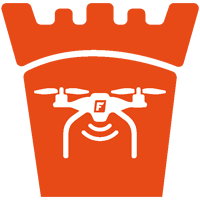
The Kestrel is a drone with the goal of collecting Team Battle Towers that are inaccessible to you. If you participate in the Team Battle and start a Kestrel, this Kestrel scans the towers around your current position and collects the closest 9 towers that do not belong to your fraction. The technically maximum possible radius is limited to 6 km. Do many towers in your area already belong to your fraction? Congratulations! Now change your location (recommended approx. 12 km) and let the Kestrel scan the new area - it will certainly be successful at the new location. The exact location of the towers is not crucial, i.e. with the help of the Kestrel you can collect towers e.g. in inaccessible terrain, away from paths, on the shore or the coast!
The development of the Kestrel is based on so-called racing drones. This makes the Kestrel extremely fast, agile and streamlined like its living namesake, but....
But this also makes the Kestrel hard to control. Up until now, it's been unsolvable for the Kestrel to overheat, crash, and shatter into debris after the last Team Battle tower it collected.
But, part 2: you can recycle this debris! You'll find them at every Team Battle tower you manually capture on site! You can always check in the newest badge if you have enough debris parts to build a new Kestrel. Receiving this badge "Kestrel: Collecting Debris" will add a new Kestrel to your inventory.
A Kestrel can be used in all weathers. It is technically high developed and your support in the Team Battle, even if you might not be as mobile as others.
So how can you use this Kestrel for you, your team and your fraction?
Neutral: collect unreachable Team Battle towers with the Kestrel (e.g. on a field, at the forest or waters...)
Attack: capture towers of other fractions with the Kestrel
Defense: use the Kestrel to recapture towers taken by other fractions
FLAGHUNTER, have a look at your inventory... As a thank you for your support in searching for the blueprints, you will find your first Kestrel there! And if you have a one-year premium membership at FLAGSTACK right now, you will even get two Kestrels :-)
Will you take part in the September Team Battle? Find a suitable location and make a test flight right away!
You are not part of the Team Battle this month? Well, from 1-4 October you will have the opportunity to join a team and then launch your Kestrel!
This Kestrel is now available in the webshop. In September even at the introductory price :-)
We say goodbye with the words of Nikola Tesla:
Nature can achieve the same result in many ways.
Best regards and most of all have fun with the Kestrel
Your Team FLAGSTACK
PS: Due to the energy, frequencies and vibrations of the Kestrels, the Forces of Nature in the Team Battle universe have also been aligned. This means that the thresholds have doubled (increased) to trigger them.
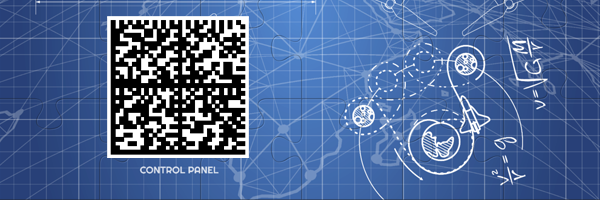
2021-09-01
Team Battle #69 is over now and all 67 teams have achieved great results!
Here is a look at the top 10 of the overall ranking for our statistics fans:
|
Rank |
Name |
Towers |
Country |
Fraction |
Members |
Credits |
|
|
1 |
FlagstackFanatics |
304 |
|
|
5 |
145,966 |
|
|
2 |
Sic Mundus Creatus Est |
306 |
|
|
5 |
133,038 |
|
|
3 |
Bielefelder Flaggers |
245 |
|
|
5 |
129,532 |
|
|
4 |
Tower Power North |
253 |
|
|
5 |
125,261 |
|
|
5 |
FlagWatchers |
206 |
|
|
4 |
92,365 |
|
|
6 |
RedFlagStars |
204 |
|
|
5 |
91,528 |
|
|
7 |
The Fantastic Five |
228 |
|
|
5 |
90,294 |
|
|
8 |
Tower Power Girls Netherlands |
145 |
|
|
5 |
87,481 |
|
|
9 |
Psychos |
125 |
|
|
5 |
83,644 |
|
|
10 |
Flag Ladies and Gentlemen |
134 |
|
|
5 |
83,528 |
And here's the fraction ranking of Team Battle #69, and we're delighted with the great overall performance from all players:
|
Rank |
Name |
Towers |
Teams |
Credits |
Average |
|
|
1 |
|
The Syndicate of Flag Hunter |
2098 |
23 |
1,052,401 |
45,757 |
|
2 |
|
The Cartel of Flag Seeker |
1374 |
21 |
768,782 |
36,609 |
|
3 |
|
The Alliance of Flag Keeper |
1447 |
23 |
776,166 |
33,746 |
All details about the team and fraction rankings can be found with a quick click.
You can find all detailed information about the credit distribution on the official FLAGSTACK help page for Team Battles.
You are enthusiastic about Team Battles, all the excitement and variety and especially about your personal advantages through the great prizes? Than you know what you have to do: Tell all your friends about it and create a new team - or even two - because after a short recovery time the next Team Battle is already in sight - on 05. September 2021 at 0:00 (Timezone Europe / Berlin) the TB #70 starts!
Your Team FLAGSTACK
2021-08-31
And again we note, FLAGHUNTER, that organized crime is helpless and lost without a leader.... What do we mean exactly?
Finally SIR MANGO and the last missing blueprint could be arrested by the volunteers. He was immediately handed over to the police and is still in jail. Hopefully he will be sentenced soon, so he never can cause such mischief again.
Well, and the raccoons? They were straying around the last few days trying to save themselves. The gang was disbanded, because there are no more orders from SIR MANGO. Most of them were arrested by the last days of August. Hopefully, after serving their sentence, they will find decent jobs to do some good works for a change. Here at FLAGSTACK they will disappear from the scene and never appear again...
The volunteers are on their way from Africa back to FHQ carrying the essential blueprint. This means to say goodbye to August and also to the numerous waterholes on the FLAGSTACK map, where the wild animals gathered...
Have you seen them all? Even the rare "Big Five", i.e. elephants, leopards, lions, rhinos and water buffalos? On the way there were endless herds of antelopes and gazelles. And whenever they were not expected, the cheeky chimpanzees came jumping and teased you wherever possible...
Be curious how the story continues...

2021-08-30
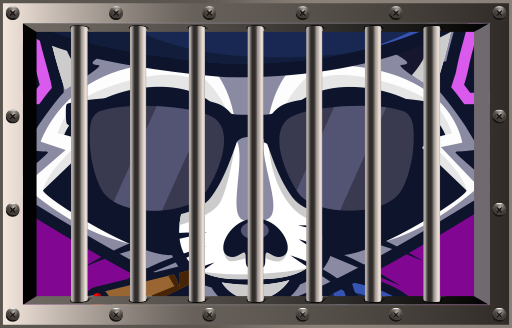
FLAGHUNTER, in the last few days the volunteers have found traces in Africa that led them directly to the final hideout of SIR MANGO... This crook knows all the tricks to disappear from sight, but even he is powerless against the great Volunteers.
And finally, the most important puzzle piece of the blueprints can be secured in SIR MANGO's lair! With your help in collecting it, the development team can now complete the secret project. But to do so, the puzzle piece must first be returned to FHQ in the safest way possible. So come on, volunteers, set off and guard the return transport together - don't let the piece of the blueprint get lost again on the way back...
So let's hurry up and get the return tickets to avoid wasting any more time....
Wait a minute... What do you say, Lednimedvidek? Ah, yes, well we can understand that... Sure, we can tell it to the FLAGHUNTERS...
She enjoyed the trip to Africa so much that she wants to stay there and so she ends her service as an Official FLAGSTACK Volunteer after many years and above all a lot of joy and commitment.
Dear Lednimedvidek, we are looking forward with you to your new different life and thank you for the great and faithful support. We will hear, read or see you.... Feel hugs from the community, the remaining volunteers and FHQ!
Back to you, FLAGHUNTER. There are still some puzzle pieces flying around on the map, and raccoons from SIR MANGO's gang of thieves keep cropping up trying to catch them. Grab them before they all disappear!
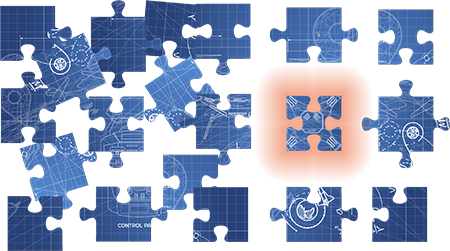
2021-08-13
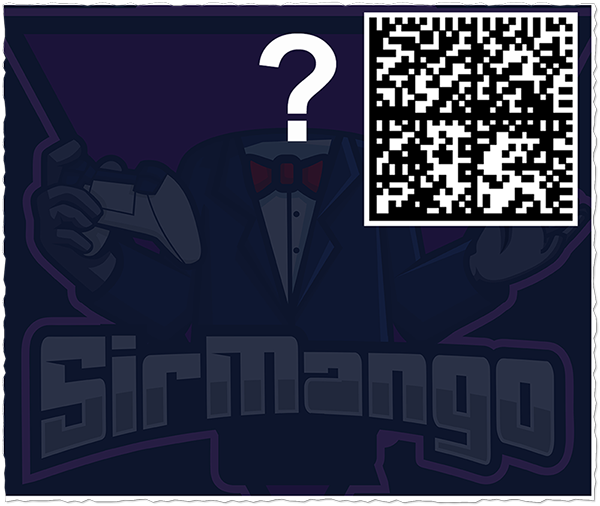
The volunteers have found the first hot trace in Africa and were close on the heels of Sir Mango - but unfortunately he escaped again. One detail was missing on the security camera picture: the head!
In any case, don't give up now - keep on searching for the blueprints worldwide - we need only a few more to finish the project!
Go Flaghunter Go!
2021-08-05
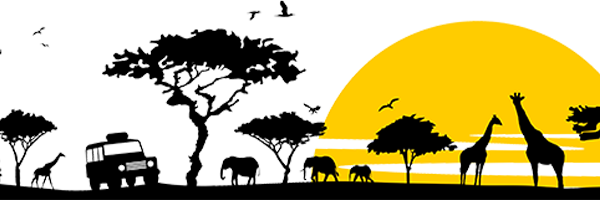
FLAGHUNTER, there is a hot lead...!
Thanks to many clues, there are more and more indications that SIR MANGO has left for Africa with the most important stolen blueprints. Well, on the one hand it's good that we can follow a hot lead; on the other hand Africa is of course a huge continent that has to be scanned systematically...
So good that the hot trail definitely ends at the main train station in Dar Es Salaam, Tanzania. Our research shows that this is the starting point for a trip on the famous Rovos Rail train. We don't hesitate for long and so the Official FLAGSTACK Volunteers set off as a team on the Rovos Rail train from Daar Es Salaam to Cape Town to find more clues to the whereabouts of SIR MANGO at each of the stations....
On the long journey through Tanzania, Zambia, Zimbabwe, Botswana and South Africa, the main focus of the volunteers is obviously on the ALARM LEVEL BLUE, SIR MANGO and the search for the lost blueprints.
To investigate every possible hiding place, the volunteers combine the trip with a safari. This gives the opportunity to visit various waterholes and possibly find SIR MANGO there...
Waterholes are known to attract all kinds of creatures... We see large herds of antelopes, zebras and also gazelles that come regularly to drink. Flamingos can be found here in small and large colonies. Various other birds sing, warble or screech in such places - parrots, ostriches and tucans, for example.
Of course, a little more rarely but very special, the "Big Five" can also be found at a waterhole: Elephants, leopards, lions, rhinos and water buffalo. Imposing animals, so big and powerful - they really deserve the title "Big Five" and belong to the most admirable animals in Africa. Doesn't even the title give you goosebumps of excitement?
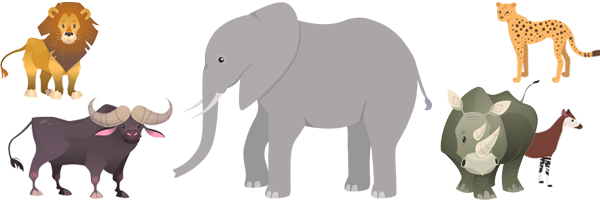
Not so big but a real eye-catcher are okapis. You don't have them in your mind right now, do you? They are these incredible creatures with legs like a zebra, the body like a horse and the head like a giraffe... Curious, rare, and therefore something very special.
The complete opposite are these wild guys: chimpanzees! As bold as brass, they run around everywhere and annoy everything and everyone - no matter if it's other animals or curious tourists... Volunteers, keep your distance from these cute fellows!
So, here we come to the point! YOU can discover the colorful, wild animal world of Africa together with the volunteers!
From 06.August 2021 (during the day, timezone FHQ/Europe/Berlin) you will find waterholes on the map. If you have an Eternal Flag in your vicinity, you will see it there! As described above, a wide variety of African wildlife can be found at the waterholes. So approach carefully so you don't scare them away.... Capture the waterhole quietly and zoom in on the map so you can observe the wild animals closely. As a souvenir you should collect the animals for your badge album - of course you'll also receive points for that :-) The animals move from waterhole to waterhole, so you can encounter different animals everywhere on the map.
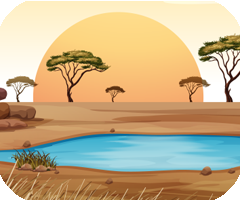
YOUR task is to discover and collect enough animals for three different badge albums...
Album and Badge 1) Collect pictures of the animals you discover on the map along the way - away from the waterholes...
Album and Badge 2) Collect pictures of the hidden animals at the waterholes that are NOT part of the "Big Five" as well as rarest animals and fill your second memory album...
Album and Badge 3) Collect at the waterholes the special animals of the "Big Five", i.e. elephants, leopards, lions, rhinos and water buffalos. And since okapis are among the rarest animals in Africa, they also count for this badge.... Even the cheeky chimpanzees have cheated their way into the badge count for this album!
Bonus badge 4) Have you filled all albums and badges? Perfect, cause you will receive this Safari-Badge ON TOP!
YOU, the FLAGSTACK community and the volunteers become the Safari Dream Team. You can admire the animal world of Africa until and including 31. August 2021 (time zone FHQ/Europe/Berlin) and collect the 3 badge albums plus bonus badge! But please also pay a little attention to blueprints - whether hidden or flying around - you will also find them on the map until the end of August... The further development of the secret project depends on it! In the end, maybe you can face SIR MANGO? Who knows, who knows...
With best regards from your tour guide at FHQ
Your Team FLAGSTACK
PS:
If you still have questions, feel free to email us at support(@)flagstack.net - with the new ticket system, you will be helped by the support team as soon as possible.
The animals may appear in different sizes on the map - depending on how shy they are and how good your binoculars are. Don't let it bother you and just have fun with this special campaign ;)

2021-08-01

Hi FLAGHUNTER!
And presto - now it's August already and the anniversary month for FLAGSTACK's 6th birthday is over. Did you enjoy everything that we offered you?
The Birthday Search Game was a fantastic success - the hunt for Jackie and Jack, the Jackpot Jumper Flags!
I'm sure you're curious to know what the correct numbers were for Jackie and Jack?! Here they are:
The 6 correct Jackie Jackpot Volunteer numbers were: 15, 16, 24, 35, 37 and 38
The 2 correct Jack Jackpot FHQ numbers were: 3 and 8
Here are the winning odds of each winning class:
|
class |
number right |
winnings |
odds |
|
1 |
1,000,000 points jackpot |
14x |
each 71,429 points |
|
2 |
6 numbers + 2 super numbers |
14x |
each 20,000 credits |
|
3 |
6 numbers + 1 super number |
15x |
each 20,000 credits |
|
4 |
6 numbers |
16x |
each 10,000 credits |
|
5 |
5 numbers |
42x |
each 10,000 credits |
|
6 |
4 numbers |
137x |
each 10,000 credits |
|
7 |
3 numbers |
259x |
each 30,000 credits |
Well? How about it? Are you one of the lucky winners? Within the next 24 hours the badge and the points for the winning class 1 will be added to the lucky players' accounts...
The cake fight was also a pure feast. By the way, the strawberry-chocolate birthday cake was snacked on most often :-)
As you are used to, there will be no boredom here at FLAGSTACK... The hunt for Sir Mango and the swirled blueprints - the ALARM STAGE BLUE - is in full swing. Hopefully, you've already found many blueprints yet. You remember? "Blue" and "white" as keywords for the hiding places?
For the FLAGSTACK community, there are tools in the fan store called "Blue Alert" that will make it easier for all FLAGHUNTERs to find the blueprint puzzle pieces that are floating around. Click here and help the community to find the blueprint puzzle pieces!
Of course, the volunteers are not sitting around idly - they are evaluating the first tangible clues. There is a lot that sounds very promising to find Sir Mango - we will keep you up to date on this...
It is still ALARM BLUE - good luck with your mission on the trail of the blueprints!
Your Team FLAGSTACK
